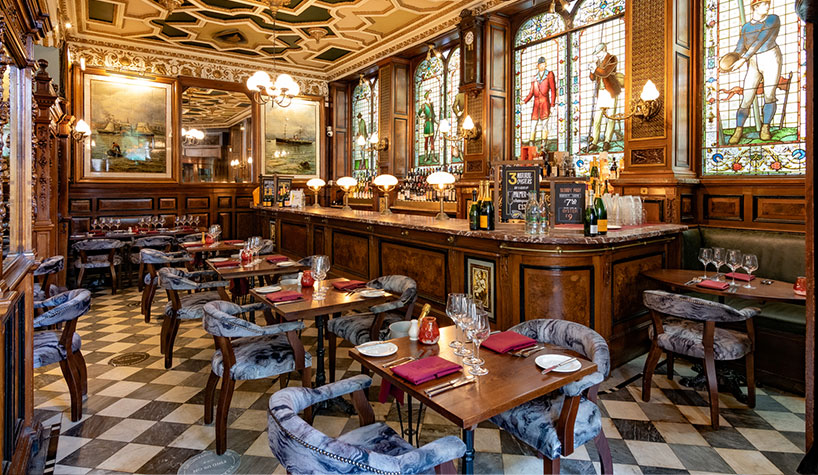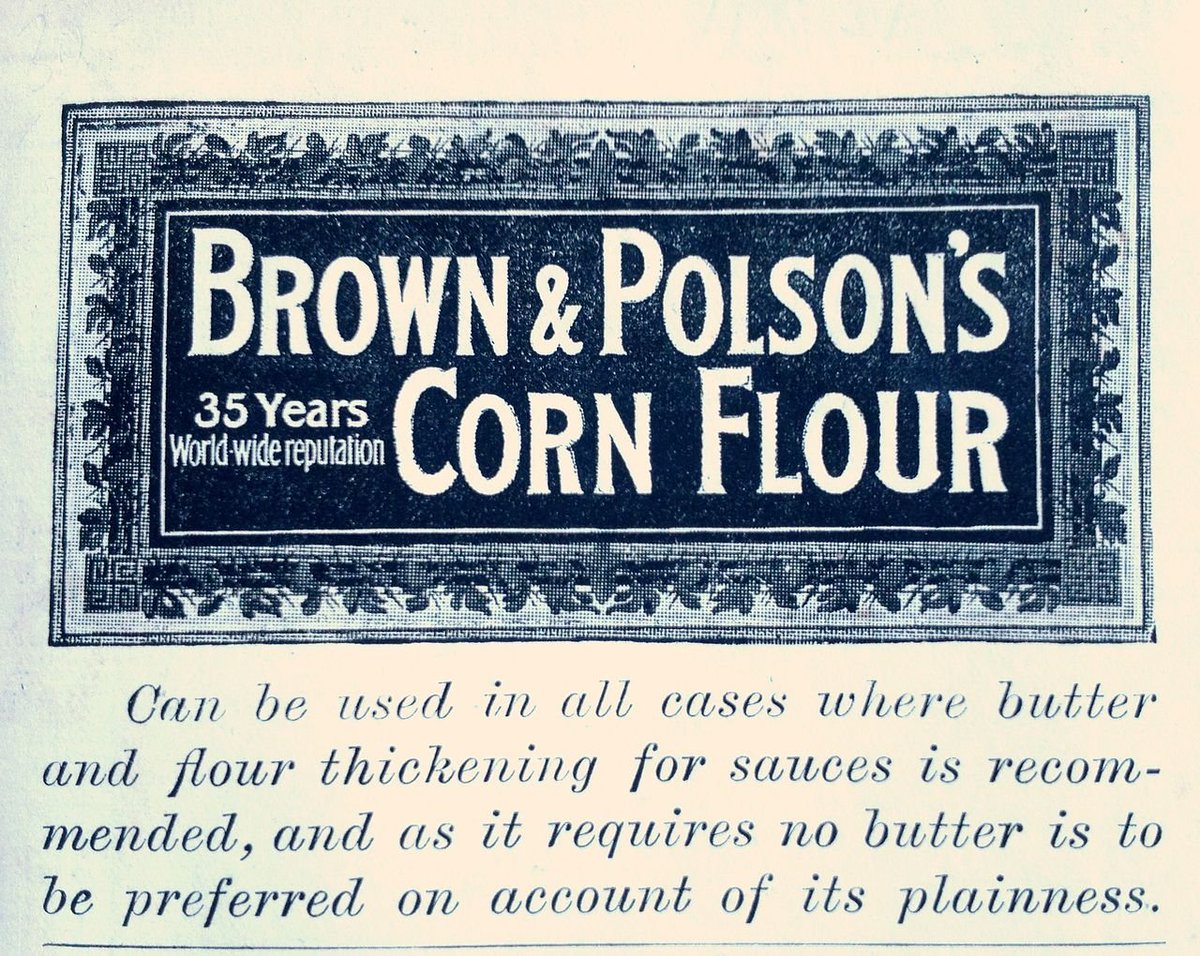
It is time now for another important piece of Scottish culinary history, so let us go beneath the crunchy, cheesy crust of the Macaroni Pie and find out a little bit more about the history of this gastronomic delicacy 🧵👇 (📷Bayne's Family Bakers) 

Let's be clear, macaroni is a globally ubiquitous foodstuff and there's more than one type of macaroni pie out there. It's got an important place in Caribbean cuisine for instance. What we're looking at here is the macaroni cheese in a Scotch pie case sort of pie (📷Cookipedia) 

Macaroni arrived in Scotland as an exotic foodstuff in the 18th century. In 1767 the Caledonian Mercury (one of Scotland's earliest regular newspaper) carried an advert by the Edinburgh merchant Hugh Campbell that he had for sale in his shop "leaf and pipe macarony" 

Adverts for it are irregular thereafter, but it was available in 1830 to "the nobility, gentry and public in general" from London grocers A. Zambelli and W. Fletcher who were advertising it to a Scottish audience in the Scotsman.
Macaroni (which at the time probably meant one of many types of tube or pipe pasta in the English language press) remained exotic as it had a tax on import of 8d in the lb, from which we can calculate 38.8t of it were imported into the UK in 1832 when the tax was reduced.
Macaroni at this time was still handmade in Italy from Italian wheat, so even the tax breaks didn't make it much more accessible to the general population. George Thomson auctioned 50 boxes of it in Leith at Sibbald's Warehouse in 1838.
And by 1862 you could have it imported from Italy "in a great variety of shapes" for 6d per lb from Robert D. Thomson, Grocer, of 23 South St. Andrew Street. By comparison, bread was selling at 2d per lb in Edinburgh in 1862. 

The doyenne of the Victorian Kitchen, published one of the first recognisable macaroni cheese recipes in her book in 1861. She recommended boiling the macaroni for 1.5-1.75 hours (!!!) in salted milk and serving it with the cheese course.
It did not take someone long to figure out you could serve macaroni in a pie - one of the earliest recipes I can find is in the Leith Herald of 1867, repeated from the Cassel's Dictionary of Cookery, for a "Game and Macaroni Pie" where the pasta bulked out a stew of game birds. 

In 1869, there were 30 boxes of macaroni for Auction by Mr Dowell at 18 George Street. In 1875 an anonymous letter writer to the Scotsman bemoaned he was "afflicted with a cook" who did not know how to prepare macaroni, and could the poor of the city not be taught cookery?
In 1886 you could treat yourself to the Café Royal dining rooms where luncheon included a macaroni soup and dinner had a "macaroni au gratin". You can still dine in the splendour of the same rooms to this day, but macaroni is off the menu. 

In 1888 Mrs Black of the West End Training School of Cookery, Glasgow, was leading classes in Aberdeen for prospective cooks which included learning how to make "Savoury Macaroni" But in Scotland, macaroni is still a fancy food for a select few of the upper classes at this point.
Macaroni Pie recipes at this time are quite common, particularly in American cookbooks, where they are basically dishes of macaroni and various meats topped with cheese, served in a gravy or white sauce, and baked into a savoury slab. They do not resemble "our" Macaroni Pie.
By the 1890s it is appearing in Vegetarian cookbooks, which was very a la mode. These dishes include turnips and tomatoes and a suggestion to serve it with boiled lettuce
Finally in 1897 we see the first hints in Scotland that Macaroni is becoming more widely available - the Linlithgowshire Gazette and the Falkirk Herald carry in their "Nice Dishes" sections, on the same day, a recipe for Fish and Macaroni Pie. 

Two things are at play here; firstly, macaroni production in Italy was being mechanised. Secondly, in both Canada and Australia, substantial quantities of Durum wheat (or "Macaroni wheat" as they also called it) were becoming available cheaply through the Empire trade.
In 1902 the Greenock Telegraph and Clyde Shipping Gazette published an unconventional macaroni pie recipe, with hard boiled eggs included and finished off in the oven soaked in stock. 

From then on, the provincial Scottish papers are frequently printing various recipes for macaroni dishes. The Selkirk "Southern Reporter" included lamb or mutton in theirs. The Barrhead News favoured fish, the Arbroath Herald recommended smokies.
But what may have really begun popularising macaroni cheese to the Scottish palate was another Scottish invention; refined corn starch, which was patened by John Polson of Paisley muslin manufacturers Brown & Polson. 

Brown & Polson's corn flour made home thickening of sauces exceptionally easy, and they became a global household name. No store cupboard was complete without it, and they advertised heavily in Scottish newspapers. 

Adverts for Brown & Polson's from 1910 up to the outbreak of WW1 consistently push "macaroni cheese" as a good use for their product. 

The Scottish macaroni cheese market was restrained by WW1, when wheat shortages saw punitive licence fees put on the production of macaroni; 18s per 280lb sack of flour, under the Flour and Bread Prices Order of 1917.
Post-war, the revitalisation of the macaroni scene in Scotland was slow. It began to take off again in the late 1920s when Canadian production of durum wheat and macaroni began to outstrip Italy's. Canada went to importing 7,000,000lb per annum to producing 12,000,000lb.
In 1923 Canada exported 2,229,000lb of Macaroni, principally to the US, Great Britain and Belgium. Macaroni was cheap and plentiful again!
The other factor that repopularised macaroni among the working classes was its inclusion in state-sponsored cookery classes aimed at working class housewives as part of a response acknowledging the role of poor diet and nutrition in public health.
In Edinburgh in 1929, the The Public Health Board were running cookery classes "to introduce into the daily dietary such neglected substances as peas, beans, rice, lentils, vegetables and macaroni".
This was a concerted effort to improve the diets of children - it was recognised "lack of suitable nourishment" was a "serious handicap". Dr John Guy gave a lecture to housewives extoling the virtues of Macaroni and cheese of "form[ing] a cheap and satisfying diet [for children]"
In 1933, the first Scottish macaroni manufacturer was incorporated - company #17,420, Macaroni Manufacturers Glasgow, with £500 capital, by Fidele Todisco of 27 Chisholm Street and a relation, Antionio Todisco of Redcar, Yorkshire. 

That was in July, Macaroni was clearly booming however as in March of that year an important event took place - Andrew G. Kidd, baker of Dundee, began advertising Macaroni Pies for sale at 3d each in branches throughout the city. 

The city of Jute, Jam and Journalism clearly deserves its alternative moniker of the "City of Discovery" for discovering for us the wonder of the macaroni pie. 

The Scottish macaroni business went from strength to strength. In 1936, Glaswegian James Marshall got in on the act, and was complimented by the Duchess of York for his exhibition stand of macaroni at the Scottish foodstuffs display in the British Industries House. 

Domestic production couldn't keep up with demand - by 1936, Canada was advertising macaroni directly to Edinburgh - calling on Edinburghers to buy plentiful, cheap and quality Canadian produce including macaroni. 



With war clouds looming, Macaroni got an unexpected boost, with the Scottish newspapers being full of helpful (but unappetising) recipes using it to bulk out scrap meat dishes (in a manner similar to stovies) or as "an old favourite" - macaroni cheese. 

But the effects of the long war took their toll and in 1941 Spaghetti and Macaroni were put under price controls as "canned vegetables". Pre-cooked macaroni in a cream and cheese sauce was fixed at 4d per 8oz can.
It was however not until after the war that macaroni was rationed (prior to that it just wasn't easily available). In 1946 it "went on points" due to wheat shortages and wheat being reserved for bread production 

By 1947, macaroni was off points again, but the same reports frankly admitted that supplies were "limited" and there was to be no new issue expected.
Macaroni was not gone for long, and in 1950 the Directory of Education for Clackmannan reported on "communal feeding in schools" but noted "macaroni cheese" was an "unpopular dish" and that 25% of children were turning it down.
He said that "Empty stomachs led to mental inaptitude" and bemoaned that there were "still some houses where the jeely piece was too common" and where "fish and chips was the regular daily dish at high tea".
Given that contemporary recipes still recommended boiling the macaroni for an hour, it's hardly surprising they didn't like the end product.
https://twitter.com/cocteautriplets/status/1545812054224904193
So there you have it. Macaroni has been kicking around Scottish cuisine for a lot longer than you might have thought, and unless anyone can prove otherwise, the Macaroni Pie seems to have originated in Dundee in 1933ish.
Awfy braw!
Awfy braw!

And here's what started the concept of this thread off a month ago, a North Boats menu from an Orkney or Shetland steamer from 1948, pride of place in Aberdeen Maritime Museum 

• • •
Missing some Tweet in this thread? You can try to
force a refresh










